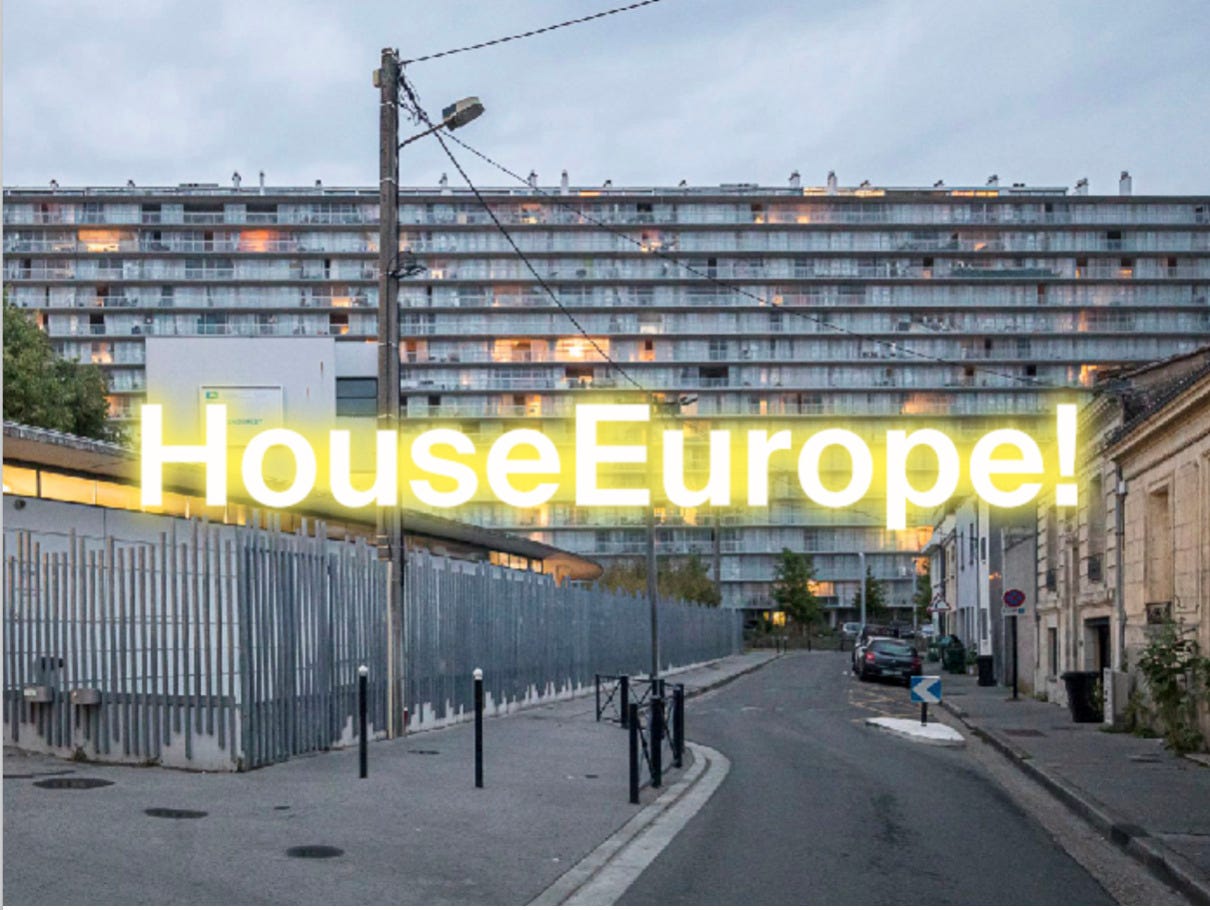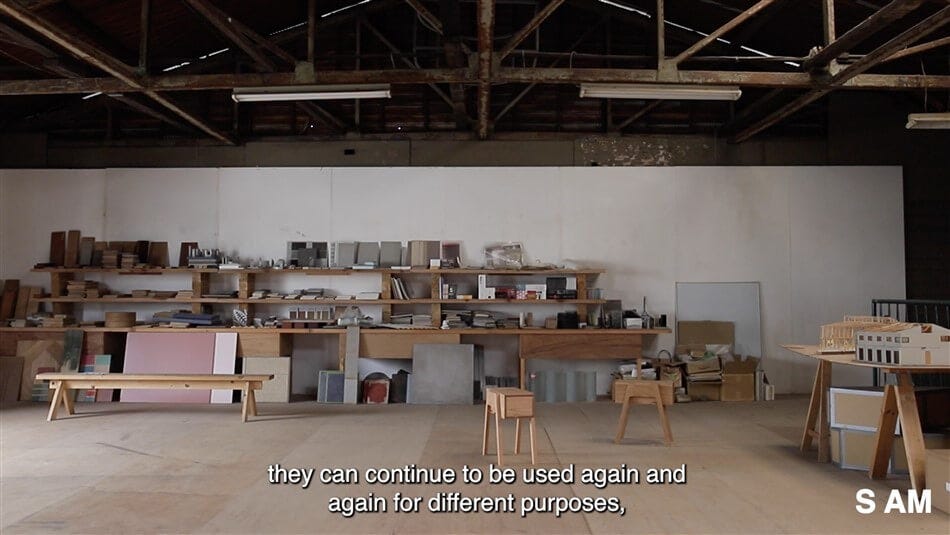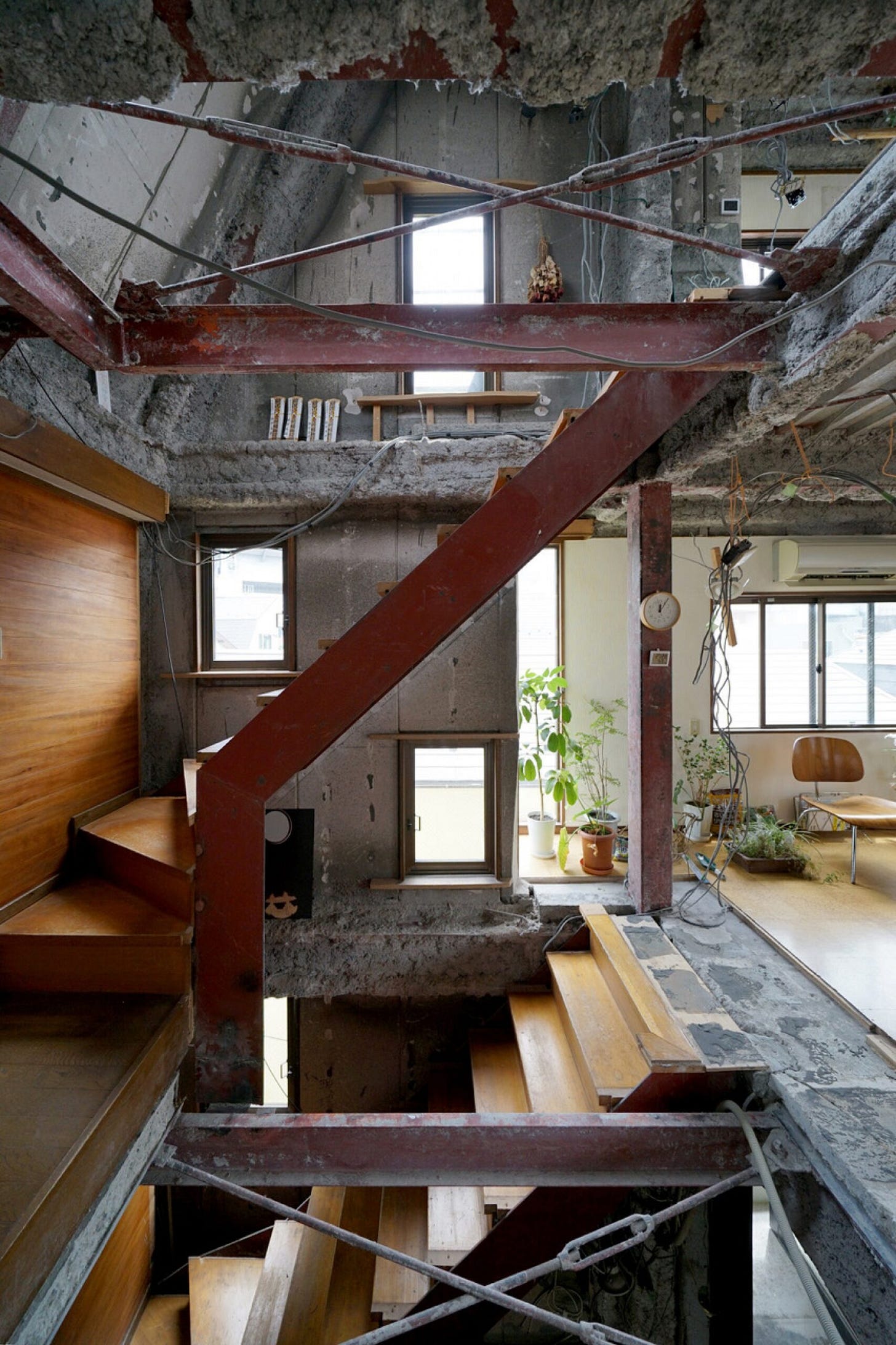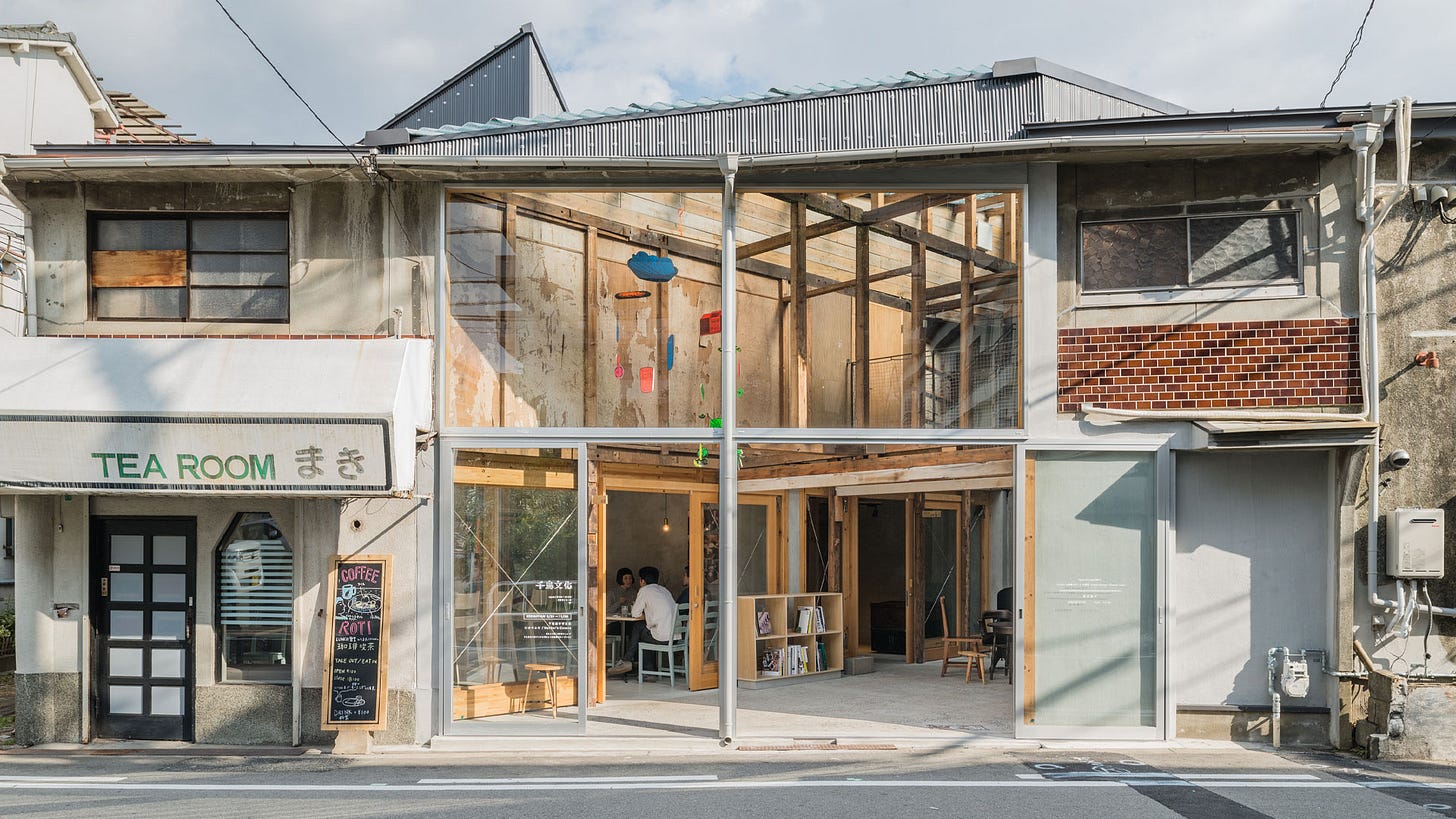New Look
Architectural Normcore in a Junkspace Age
In the fragmented landscapes of contemporary cities, architecture grapples with a pervasive ambiguity. On one hand, the built environment is shaped by sprawling consumerist structures that seem to defy coherence and intention—what the Dutch architect, writer and thinker Rem Koolhaas famously termed Junkspace. On the other hand, cultural discourses, like the former New York based trend forecasting group K-hole described in their 2013 report Youth Mode, urge us to embrace sameness, ambiguity, and adaptability as principles for connection and coexistence. Architectural Normcore synthesizes these perspectives, proposing a cultural and ecological reimagining of architecture that celebrates the ordinary, the overlooked, the hybrid, and the local.
Junkspace as Symptom and Context
Rem Koolhaas’s Junkspace paints a portrait of modern architecture’s fallout. He describes Junkspace as the “residue” of modernity, where purposeless sprawl, excessive consumerism, and technological inertia have created a chaotic, fragmented built environment where service- and consumption functions, and anonymous infrastructure dominate a landscape of utilities, ducts, appliances, wires - either visible or hidden - divorced from any coherent cultural narrative or aesthetic value.
Koolhaas critiques these spaces as fundamentally anti-architectural. They lack the intention, identity, and cultural significance that once defined architectural movements. Instead, they are spaces of accumulation—expanding infinitely without meaning or purpose. This fragmentation reflects the demands of late capitalism: efficiency, profit, and mass production over thoughtful design.
However, Junkspace is more than a critique; it is also a reality check. These spaces exist, shaping how people live, work, and move through the world. While architects often ignore or critique them, Koolhaas urges recognition of their overwhelming presence. Rather than resisting Junkspace, he implies, perhaps architecture should grapple with it more directly.
A Cultural Shift: Youth Mode’s Normcore Ethos
Where Junkspace describes the physical spaces of our modern world K-hole’s Youth Mode manifesto captures a cultural shift in how people navigate modern life. In a world saturated with options and overwhelmed by the search for authenticity, Youth Mode proposes a radical alternative: Normcore.
At its core, Normcore rejects the obsession with uniqueness and difference that often defines modern identity. Instead, it celebrates sameness, adaptability, and connection. As the manifesto explains, Normcore is about “opting into” situations rather than standing apart from them. It values relatability and pragmatism over exclusivity or distinction.
This ethos resonates with architecture’s challenges in engaging with the everyday. Just as Youth Mode urges people to embrace the “normal” as a means of connection, architects are challenged to reconsider ordinary, hybrid, and utilitarian spaces as central to cultural expression. This requires a rejection of elitism and a willingness to engage with the messy, ambiguous reality of the modern built environment.
Architectural Normcore
Architectural Normcore builds on the acceptance of Junkspace and inspiration of a Youth Mode to propose a new aesthetic paradigm for architecture. Instead of dismissing the chaotic sprawl of contemporary cities, it calls for a reimagining of these spaces as opportunities for cultural and ecological transformation.
Architectural Normcore embraces the anonymous, ordinary, and the hybrid—the office buildings, parking lots, big box shopping areas, strip malls, distribution centers, suburban houses, and modernist housing blocks that define much of contemporary urban life. These spaces, often dismissed as “ugly” or “invisible,” are reinterpreted through a lens of sustainability, inclusivity, and adaptability.
Rather than imposing new, grandiose visions, architects are urged to work with what already exists: retrofitting, densifying, and greening these spaces to align with contemporary ecological and social goals. Aesthetically, this means rejecting the polished perfection of high design in favour of a “post-authenticity” aesthetic—one that values ambiguity and adaptability over traditional notions of beauty or distinction.
From Chaos to Opportunity
The convergence of Junkspace, Youth Mode, and Architectural Normcore suggests a fundamental shift in how architects approach design. Koolhaas’s critique, K-hole’s ethos, and an optimistic acceptance of Architectural Normcore share a recognition of ambiguity as a defining feature of the modern world.
While Koolhaas critiques Junkspace as a chaotic byproduct of modernity, Architectural Normcore reframes it as a canvas for creativity. Just as Youth Mode celebrates adaptability, Architectural Normcore sees potential in the anonymous and ambiguous spaces of contemporary cities. By embracing these spaces rather than rejecting them, architects can create a more inclusive and sustainable built environment.
Aligning Style with Sustainability
The sustainability imperative is central to Architectural Normcore. In an European context, the President of the European Commision Ursula von der Leyen call’s for a “European renovation wave”. This underlines the fact, that the built environment will play a critical role in combating climate change. This involves reusing and repurposing existing materials and spaces rather than tearing them down and starting anew.
For example, Europe’s vast stock of anthropogenic materials—buildings, roads, and infrastructure—represents an immense opportunity for reuse. By creatively adapting these materials and spaces, architects can align ecological goals with cultural and aesthetic innovation. Von der Leyen’s vision for a “new European Bauhaus” encapsulates this idea, proposing a co-creation space where architects, designers, artists, and engineers collaborate to create sustainable, beautiful, and inclusive spaces in the existing building stock.
As a reply to “New European Bauhuas” the movement “HouseEurope” – initiated by renowned architects across Europe - views the green transition as more than just an environmental or economic undertaking—more urgently as a cultural project that requires systemic change of housing and building regulation as well as transformation of our aesthetic biases.
Architectural Normcore, “HouseEurope” and Japan’s “Make Do With Now” Movement: A Shared Ethos
The exhibition, publication and film staged at “Swiss Architecture Museum” in Basel “Make Do With Now – New directions in Japanese Architecture” documents a movement towards a new philosophy, which emerged as a pragmatic response to social, economic, and environmental realities in Japan.
This direction emphasizes resourcefulness, minimalism, and practicality. Rooted in Japan’s cultural traditions of mottainai (a sense of regret over waste) and wabi-sabi (beauty in imperfection), this movement emerged in response to economic stagnation, an aging population, and increasing environmental concerns.
Rather than seeking new and extravagant solutions, a new generation of architects portraited in “Make Do With Now” focuses on repurposing existing materials, spaces, and practices. It embraces the imperfections of the built environment, seeing value in what already exists. From retrofitting old houses to celebrating the charm of aging infrastructure, the movement prioritizes functionality and sustainability over flashy, new designs. A generation of architects that focuses on a sense of “local-ism” – moving away from centralism: Prime real estate and investment sites and prestige – into seeing the architect as an integral part of a local community – not different from the local carpenter, butcher or hairdresser.
The HouseEurope initiative, much like Make Do With Now, rejects the notion that progress requires starting anew. Instead, it advocates for creative solutions that adapt and transform the built environment to align with contemporary needs while respecting its history and local communities.
Aesthetic Reimagination
Aesthetically both movements share an ethos of finding beauty and value in the ordinary and imperfect. HouseEurope’s vision for a “distinct aesthetic” rooted in sustainability echoes the wabi-sabi principles of Make Do With Now, where imperfection and transience are celebrated.
In practical terms, this means designing spaces that are inclusive and functional without adhering to rigid notions of “good taste.” It also means challenging the dominance of monocultural aesthetics in favour of diverse, locally informed designs that reflect the complexities of modern life.
Both movements share profound resonances with Architectural Normcore. Both reject grandiosity in favour of grounded, adaptable, and context-sensitive solutions. By drawing parallels between these movements, we can illuminate a global shift in design philosophy—one that embraces the everyday, values sustainability, and redefines aesthetic norms.
And perhaps most important of all – these movements share a common accept and expectation of economic stagnation of what we call the Western World, developed economies or the “Global North”
The Periphery as a Testing Ground
Where Junkspaces are the byproducts of modern architecture present everywhere we look, the spatial “byproducts” of our cities can often be experienced in post-industrial sites, obsolete infrastructure and to a large extend in the urban periphery – places that are critical sites for this transformation. These areas, often dismissed as culturally insignificant, offer vast potential for experimentation and innovation. In cities like Copenhagen, the periphery is where infrastructure, underused spaces, and ecological challenges intersect.
By focusing on these areas, Architectural Normcore seeks to break free from the monocentric narratives that dominate urban design into a new localism. Instead of privileging the historical and culturally celebrated cores of cities, it advocates for a more diverse, multi-faceted vision of urban identity. This means densifying and adapting the periphery on its own terms, celebrating its unique character and community rather than imposing external ideals.
Every architectural movement has its aesthetic. Architectural Normcore offers one rooted in inclusion, adaptability, and sustainability. It challenges architects to look beyond traditional notions of beauty and value, embracing the ordinary and the overlooked as central to cultural and ecological progress. A “New Look”.
This aesthetic is not about escapism or nostalgia. It is about confronting the realities of the modern world—its chaos, ambiguity, and hybridity—and finding new ways to create meaning and connection. It is about transforming the fragments of Junkspace into a cohesive, sustainable, and inclusive vision for the future.
In a world shaped by climate crisis, social change, and cultural ambiguity, Architectural Normcore represents an aesthetic call to action. It challenges architects to redefine their aspirations not as creators of isolated masterpieces but as stewards of the everyday—towards a role rooted in resource awareness, that is more vital, and more creative, than it has been for decades.







